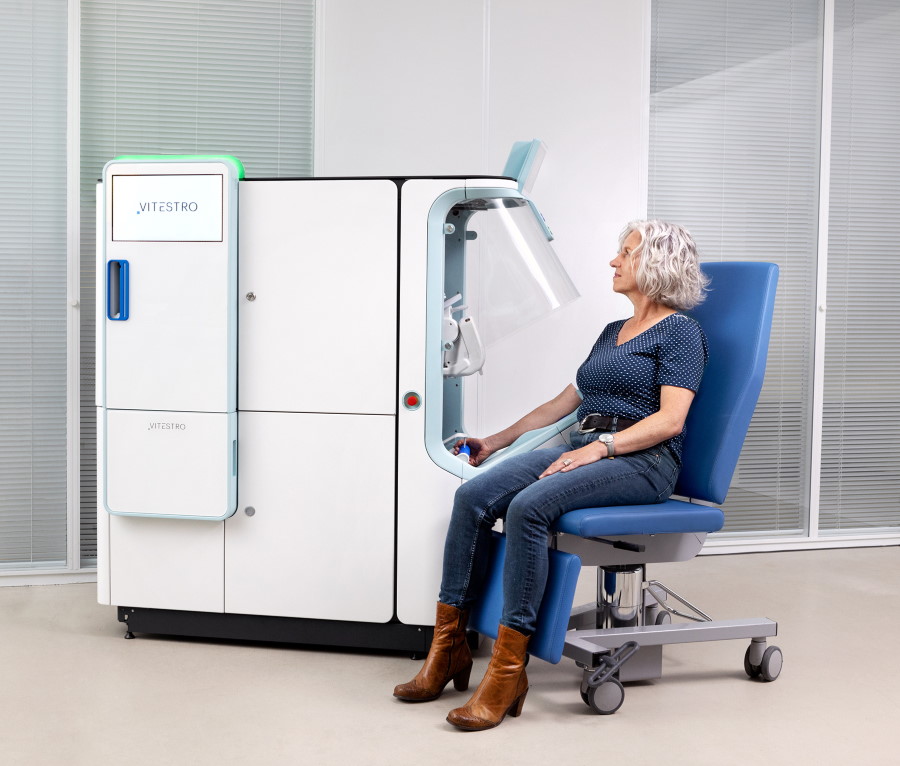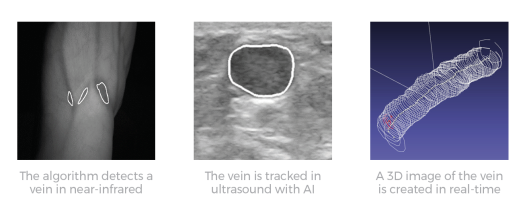Blood drawing robot heading for pivotal trials

In future, blood samples may be taken by an autonomous robot rather than a healthcare professional – if Dutch developer Vitestro can get its prototype approved for marketing.
Vitestro's blood drawing (phlebotomy) robot is designed to offer a solution to what the company says is a growing shortage of healthcare personnel, coupled with rising demand for blood tests with billions carried out every year worldwide.
Blood testing forms the basis of 70% of all medical decisions made by physicians, and according to prior research can have a failure rate of 27% in people without visible veins and up to 60% in challenging patients, such as those who are emaciated.
The device (pictured above) uses artificial intelligence and ultrasound imaging to deliver a needle exactly where it is needed to draw blood.
It automatically carries out the entire procedure, from applying a tourniquet to placing a dressing on the site and disposing of the used needle, according to the Utrecht-based company.
 In clinical studies, the prototype of the device already performed 1,500 automated blood draws on more than 1,000 patients, said Vitestro.
In clinical studies, the prototype of the device already performed 1,500 automated blood draws on more than 1,000 patients, said Vitestro.
"The mounting shortage of healthcare personnel is imminent," according to the robotics specialist's co-founder and chief executive Toon Overbeeke.
"The pandemic has further led to loss of workforce, causing a bleak outlook for hospital output around the globe, and leading to reduced access and continuity of care," he said. "That's why revolutionary automation like our blood drawing device is inevitable to solve the industry's biggest problem."
Pivotal trials of the robot are expected to get underway in 2023 in the hope of bringing the robot to market in Europe in 2024, said Vitestro in a statement.
Other groups are also developing blood-drawing devices. A team from Rutgers University in the US led by Martin Yarmush has developed a hand-held device dubbed VeniBot that according to a 2020 study performed at least as well as human phlebotomists.
The team has not secured a commercial partner for the device as yet, but is trying to scale it down further in the hope of one day creating a version that could be kept in the pocket of a lab coat.
Meanwhile, in China a larger device – not dissimilar in scale to the Vitestro robot – is being developed by Beijing-based company Magic Nurse and has already been approved for sale in its home market.
If Vitestro's machine is approved, it is initially intended to be used in outpatient phlebotomy departments, with patients offered a choice between the robot and human personnel.
"To prepare for production and commercialisation, the team will double in size in the next two years," said Overbeeke.
"We have clear momentum in the market and will be the first to bring autonomous technology to European hospitals."












